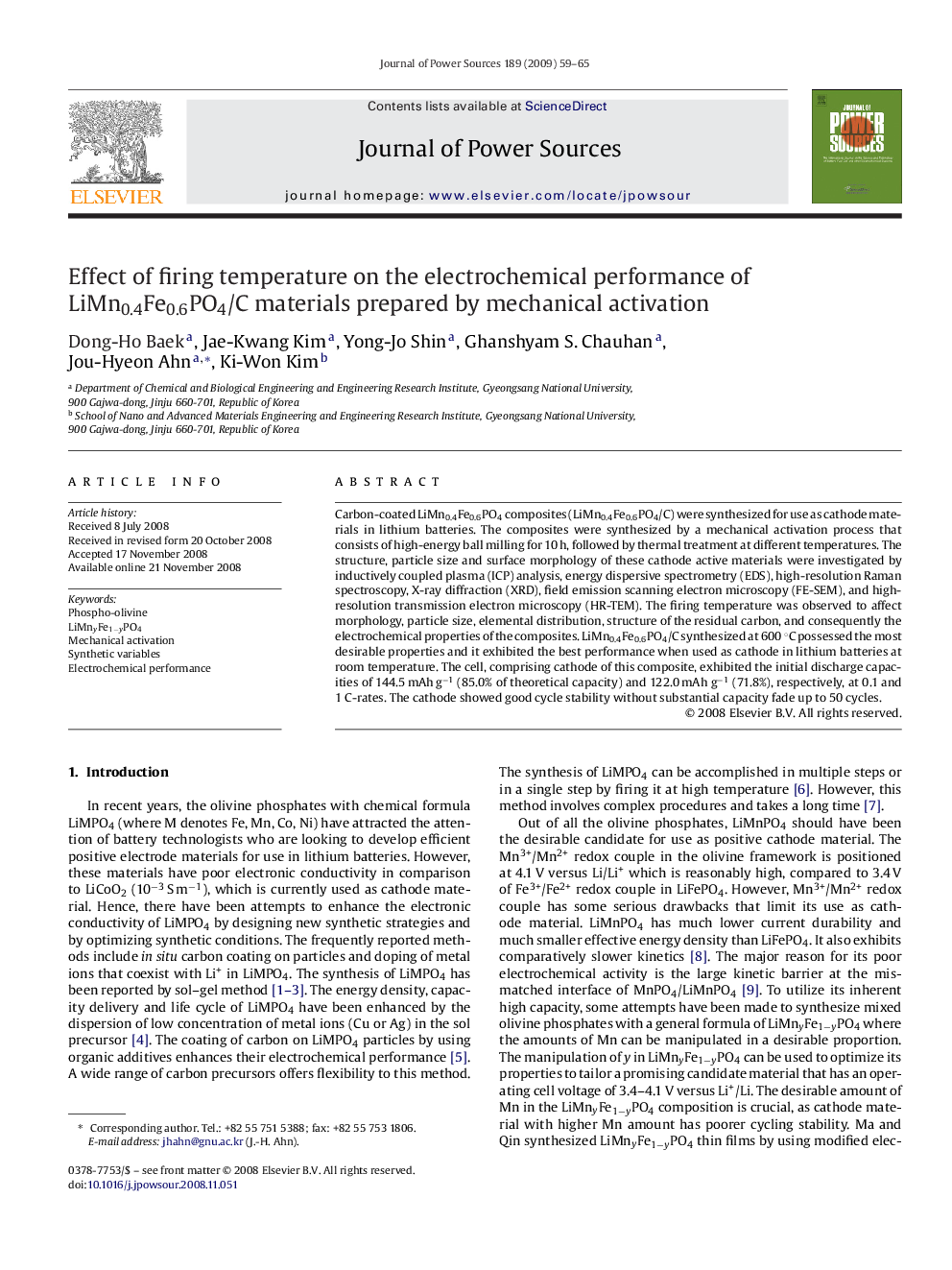| Article ID | Journal | Published Year | Pages | File Type |
|---|---|---|---|---|
| 1291152 | Journal of Power Sources | 2009 | 7 Pages |
Carbon-coated LiMn0.4Fe0.6PO4 composites (LiMn0.4Fe0.6PO4/C) were synthesized for use as cathode materials in lithium batteries. The composites were synthesized by a mechanical activation process that consists of high-energy ball milling for 10 h, followed by thermal treatment at different temperatures. The structure, particle size and surface morphology of these cathode active materials were investigated by inductively coupled plasma (ICP) analysis, energy dispersive spectrometry (EDS), high-resolution Raman spectroscopy, X-ray diffraction (XRD), field emission scanning electron microscopy (FE-SEM), and high-resolution transmission electron microscopy (HR-TEM). The firing temperature was observed to affect morphology, particle size, elemental distribution, structure of the residual carbon, and consequently the electrochemical properties of the composites. LiMn0.4Fe0.6PO4/C synthesized at 600 °C possessed the most desirable properties and it exhibited the best performance when used as cathode in lithium batteries at room temperature. The cell, comprising cathode of this composite, exhibited the initial discharge capacities of 144.5 mAh g−1 (85.0% of theoretical capacity) and 122.0 mAh g−1 (71.8%), respectively, at 0.1 and 1 C-rates. The cathode showed good cycle stability without substantial capacity fade up to 50 cycles.
